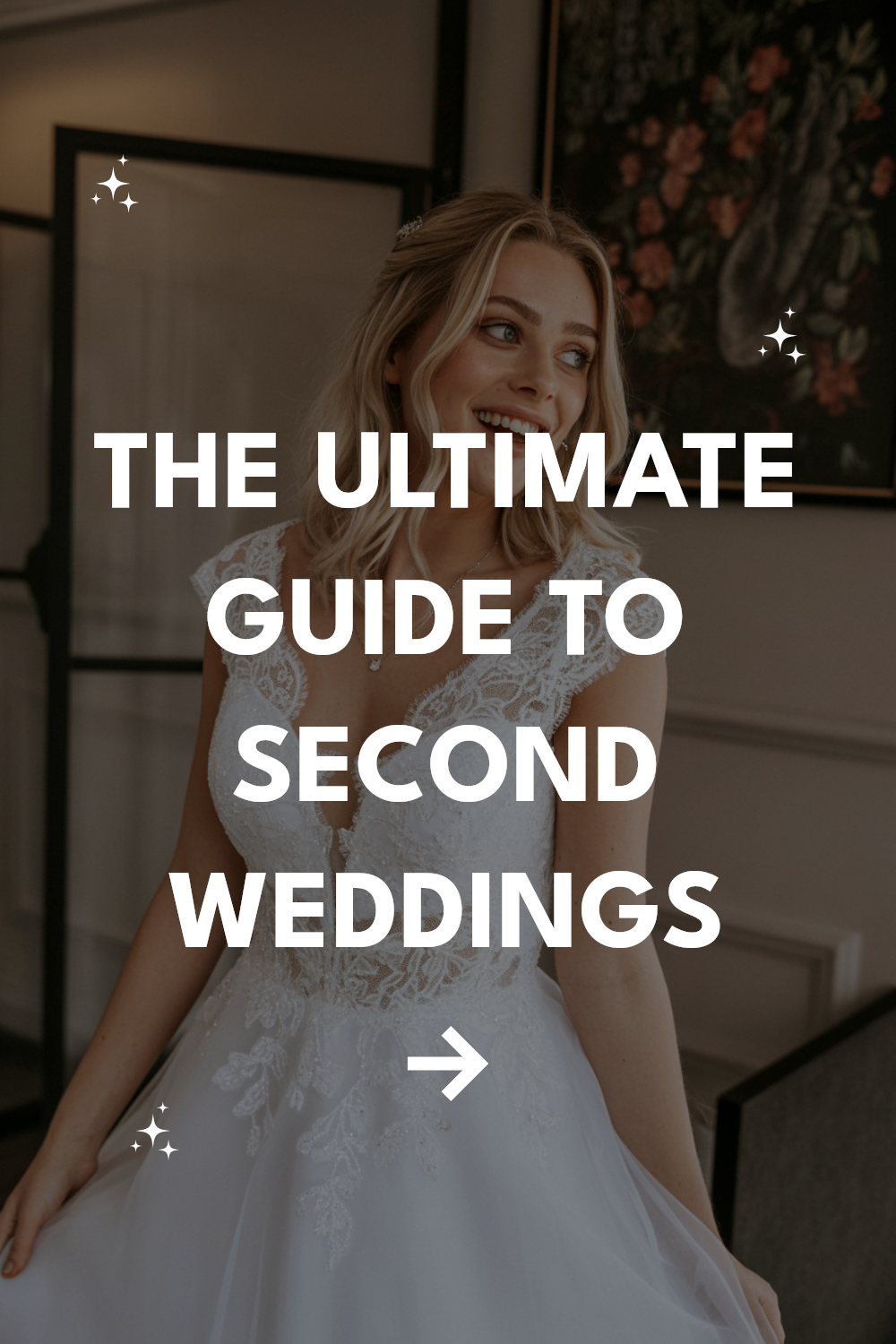Planning a second wedding feels different from the first time around. You’re older, hopefully wiser, and definitely more aware of what actually matters when two people decide to build a life together.
Second weddings come with their own unique joys and challenges—from navigating family dynamics to deciding how much tradition to embrace or toss aside.
Let’s dive into everything you need to know to create a celebration that feels authentically yours.
Timing Your Second Wedding
When to Start Planning
Unlike first weddings that often have year-long engagements, second weddings typically have shorter planning periods. Six months is often plenty of time, especially if you’re keeping things more intimate.
That said, don’t rush if you’re not ready. Take time to let your relationship settle, especially if children are involved or if either of you is recently divorced.
Seasonal Considerations
Consider your personal history when choosing dates. Some couples deliberately avoid anniversary dates from previous marriages, while others don’t give it a second thought.
Think practically about your guests’ schedules and your own. If you have children, school calendars and custody arrangements might influence your timing more than wedding venue availability.
Budgeting for Your Second Wedding
Who Pays for What
Traditional wedding etiquette about parents paying rarely applies to second weddings. Most couples fund their own celebrations, which actually gives you more control over decisions.
This financial independence can be liberating. You’re not beholden to anyone else’s vision or budget constraints, but you’re also responsible for every expense.
Cost-Saving Strategies That Don’t Compromise Style
| Expense Category | First Wedding Average | Second Wedding Alternative | Potential Savings |
|---|---|---|---|
| Venue | $10,000-15,000 | Private home/restaurant | 40-60% |
| Photography | $2,500-4,000 | Newer photographer/shorter coverage | 30-50% |
| Flowers | $2,000-3,500 | Seasonal/local blooms | 25-40% |
| Catering | $70-150 per person | Brunch/cocktail reception | 20-50% |
Second weddings often prioritize experiences over things. Couples might splurge on an amazing honeymoon while keeping the wedding itself more modest.
Guest List Dynamics
Navigating Complex Relationships
Your guest list might include your ex-in-laws who adore you, friends who were “his” or “hers” during the divorce, and new relationships that have formed since. It’s complicated, and that’s okay.
Be honest about potential awkwardness, but don’t let fear of discomfort prevent you from inviting people you genuinely want there. Most adults can handle being in the same room for a few hours to celebrate your happiness.
Children and Blended Families
Including children from previous relationships isn’t just polite—it’s essential for building your new family unit. Give them meaningful roles that feel special, not obligatory.
Some couples write separate vows to their future stepchildren, creating a family unity ceremony within the wedding. It’s touching when done genuinely, cheesy when forced.
Ceremony Considerations
Religious and Cultural Elements
If your first wedding was a big religious affair and this one feels more personal, you might opt for a civil ceremony. Conversely, some couples find deeper spiritual meaning the second time around.
Check with your religious institution about any restrictions or requirements for second marriages. Some faiths have specific protocols, while others treat all marriages equally.
Writing Your Own Vows
Second wedding vows often feel more authentic because they’re born from real experience. You’ve learned what love actually looks like in daily life—the mundane moments, the difficult conversations, the quiet support.
Avoid referencing past relationships directly in your vows, but don’t pretend this is your first rodeo either. Acknowledge the journey that brought you together without dwelling on what came before.
Unity Ceremony Ideas
Traditional unity candles might feel too reminiscent of first weddings. Consider alternatives that reflect your blended family:
- Sand ceremony with different colored sand for each family member
- Tree planting ceremony (especially meaningful if you’re buying a home together)
- Wine blending ceremony (perfect for couples who love wine)
- Handfasting with cords representing different aspects of your relationship
Reception Planning
Venue Selection
Second weddings often work beautifully in non-traditional venues. Restaurant private dining rooms, historic homes, art galleries, or even your own backyard can create intimate, memorable celebrations.
The key is choosing a space that reflects your personalities now, not what you thought you wanted at twenty-five. Comfort and conversation matter more than Instagram-worthy backdrops.
Menu and Entertainment
Brunch weddings are particularly popular for second marriages. They feel fresh, allow for great conversation, and naturally wind down at a reasonable hour if you have children.
Skip the traditional wedding cake if it doesn’t excite you. Dessert bars, pie stations, or even a selection of your favorite desserts from a local bakery can be more personal and often more delicious.
Music and Dancing
Your musical tastes have probably evolved since your first wedding. Create a playlist that reflects your current selves—songs that are meaningful to your relationship now.
Consider hiring a smaller band or even a talented solo musician instead of a full DJ setup. The goal is atmosphere, not a full dance party (unless that’s specifically what you want).
Fashion and Style
Dress Codes and Attire
White wedding dresses are absolutely appropriate for second weddings, despite outdated etiquette rules suggesting otherwise. Wear what makes you feel beautiful and confident.
That said, many second-time brides choose colors, shorter dresses, or more unconventional styles simply because their tastes have evolved. There’s freedom in not following a prescribed formula.
Accessories and Details
Consider incorporating meaningful jewelry—perhaps something that belonged to a grandmother or a piece that represents your journey. Sentimental accessories often mean more than new purchases.
If you have children, coordinating their outfits with your overall color scheme helps create cohesive family photos while making them feel included in the aesthetic choices.
Managing Expectations and Emotions
Dealing with Comparison
It’s natural to compare your second wedding to your first, but try to resist dwelling on these thoughts. This celebration represents who you are now, not who you were then.
Friends and family might make comparisons too, usually without meaning harm. Have a few polite responses ready: “We’re focused on celebrating this new chapter” or “Every wedding is different because every relationship is unique.”
Handling Stress and Anxiety
Second weddings can bring up unexpected emotions. You might feel guilty about being happy, worried about making the same mistakes, or anxious about blending families successfully.
These feelings are completely normal. Consider couples counseling before the wedding, not because anything’s wrong, but because you’re building something new and complex that deserves professional support.
Legal and Practical Considerations
Name Changes
Changing your name after a second marriage involves different considerations than the first time. You might have professional reasons to keep your current name, or children who share your current surname.
Some women choose to hyphenate with their new spouse’s name, while others keep their name professionally but change it socially. There’s no right answer—only what works for your situation.
Financial Planning
Combining finances when both partners have established credit, assets, and potentially debt requires careful planning. Consider meeting with a financial advisor before the wedding.
Prenuptial agreements are more common in second marriages and shouldn’t be viewed as unromantic. They’re practical tools for protecting both partners and any children from previous relationships.
Photography and Memories
Capturing Your Story
Your wedding photographer should understand that this isn’t just another wedding—it’s a celebration of resilience, second chances, and blended families. Look for photographers who specialize in intimate celebrations.
Consider engagement photos that include your children if you have them. These images often become treasured family keepsakes that represent your new family unit.
Creating New Traditions
Start fresh traditions that belong entirely to your new marriage. Maybe it’s an annual trip to where you got engaged, or a special meal you cook together on your anniversary.
These new traditions help establish your unique identity as a couple, separate from any previous relationships or family expectations.
Making It Memorable
Second weddings succeed when they feel authentic to the couple getting married. Strip away the “shoulds” and focus on what actually brings you joy.
Your celebration might be smaller, but it doesn’t have to be less meaningful.
Often, the opposite is true—second weddings can feel more intentional, more grateful, and more genuinely celebratory because everyone present understands that love isn’t guaranteed and happiness isn’t a given.
Trust your instincts, embrace the complexity of your situation, and create a day that honors both your journey and your future together. After all, you’ve earned the right to celebrate exactly how you want to.


